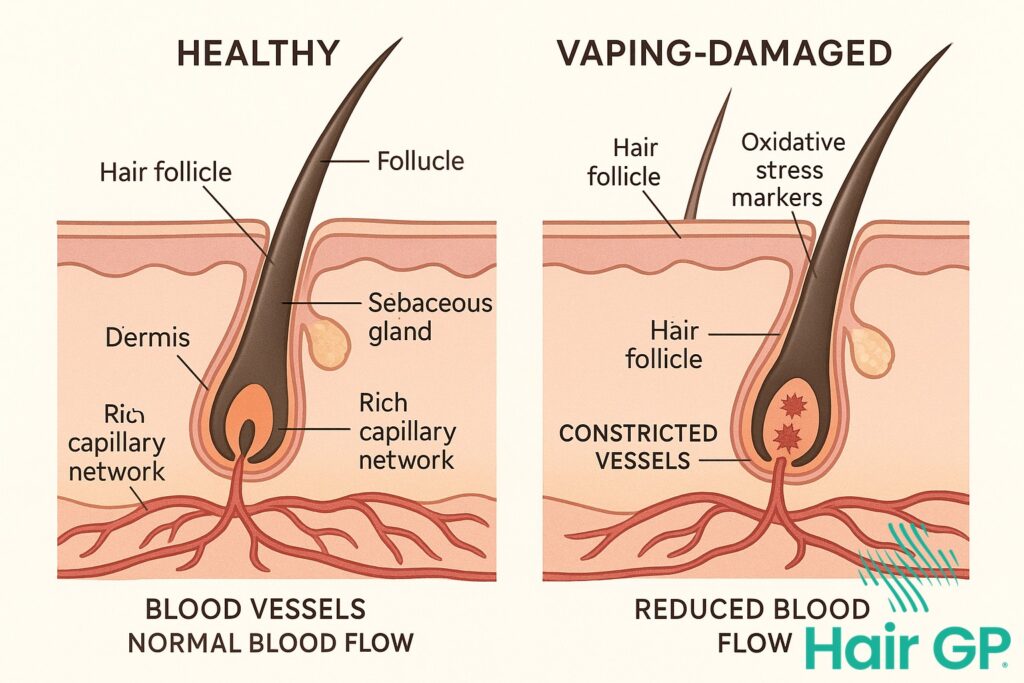Introduction
Discovering strands of hair on your pillow or in the shower drain whilst undergoing a detox programme can be alarming. Hair Loss During Detox is a phenomenon that catches many people off guard, leading to unnecessary worry about permanent damage. The good news is that this excessive hair shedding is typically a temporary response to the significant changes your body undergoes during a cleanse.
When you embark on a detoxification journey, your body experiences various adjustments as it eliminates toxins and adapts to new dietary patterns. These changes can trigger stress responses that affect your hair follicles, resulting in temporary hair loss that usually resolves on its own. Understanding why this happens can help alleviate concerns and allow you to focus on your wellness goals without undue anxiety.
This comprehensive guide explores the intricate relationship between detoxification and hair health. We’ll examine the biological mechanisms that cause follicles to shift from their growth phase to a shedding phase during cleansing programmes. You’ll learn about the specific type of hair loss most commonly associated with detox, understand why some individuals experience more pronounced shedding than others, and discover when you can expect regrowth to begin.
We’ll also provide practical strategies for supporting your hair health throughout your detox journey, including nutritional approaches and gentle care techniques. Finally, we’ll help you recognise when hair loss might indicate something beyond normal detox-related shedding, ensuring you know when professional medical advice is warranted.
Key Takeaways – TL/DR
- Detox-related hair loss is typically temporary and resolves within 3-6 months
- The stress of detoxification can trigger telogen effluvium, pushing more follicles into the shedding phase
- Proper nutrition and gentle hair care during detox can minimize excessive shedding
- Seek medical attention if hair loss persists beyond 6 months or is accompanied by other symptoms
Understanding the Connection Between Detox and Hair Loss
The physiological relationship between detoxification and temporary hair loss stems from the body’s complex stress response mechanisms. When undergoing a detox programme, your system experiences significant metabolic adjustments that can trigger excessive hair shedding through altered hormone levels and nutrient distribution. Understanding this connection helps distinguish between temporary shedding during cleansing and permanent hair loss conditions.
What Happens to Your Body During Detox
During detoxification, your body undergoes substantial metabolic shifts as it works to eliminate accumulated toxins and reset various systems. This process triggers nutrient redistribution, where essential vitamins and minerals are redirected to support vital organs and detoxification pathways [1]. The sudden dietary changes common in detox programmes can create a temporary energy deficit, forcing your body to prioritise critical functions over non-essential processes like hair growth. Additionally, the stress hormone release that accompanies these metabolic changes can significantly impact hair follicles, leading to a phenomenon where hair falls out more readily than usual.
The Stress Response and Hair Follicle Impact
The elevation of cortisol levels during detox creates a cascade effect that directly influences hair follicle behaviour. Research demonstrates that increased cortisol can prematurely push hair follicles from the growth phase into the resting phase, resulting in experiencing hair loss approximately two to three months after the initial stress [2]. Hair follicles exhibit remarkable sensitivity to hormonal fluctuations, and the growth phase disruption caused by detox-related stress typically manifests as temporary hair loss rather than permanent damage. This stress-induced shedding affects the normal hair growth cycle, causing more follicles to enter the telogen phase simultaneously, leading to noticeable thinning that usually resolves once the body adapts to the detox process.
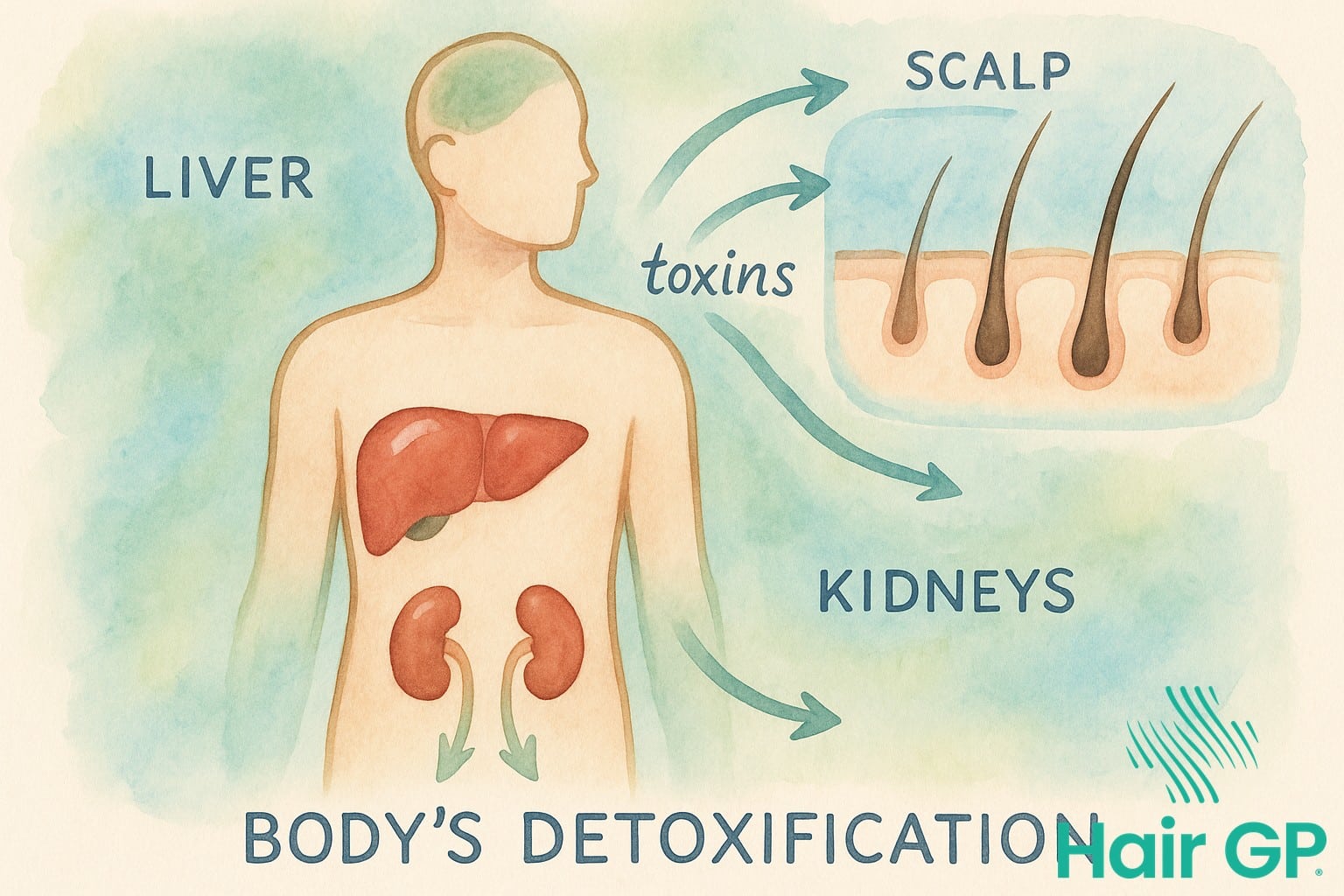
The Science Behind Temporary Hair Shedding During Cleansing
Understanding the hair growth cycle is essential for comprehending why temporary hair loss occurs during detoxification. The intricate process involves distinct phases that can be disrupted when the body undergoes significant metabolic changes, leading to accelerated shedding that appears alarming but is typically reversible.
Normal Hair Growth Cycle Explained
Each hair follicle operates independently through three distinct phases of the growth cycle. The anagen phase, or active growth period, typically lasts between two to seven years and encompasses approximately 85-90% of scalp follicles at any given time [3]. During this phase, cells in the hair root divide rapidly, adding length to the hair shaft.
The catagen phase marks a transitional period lasting roughly two to three weeks, where growth ceases and the hair follicle shrinks. Only about 1-3% of hairs are in this phase simultaneously. Finally, the telogen or shedding phase lasts approximately three months, with 10-15% of follicles resting before releasing the hair shaft [3]. Normal shedding involves losing 50-100 hairs daily as part of this natural cycle.
How Detox Disrupts the Hair Cycle
Detoxification can trigger a condition known as telogen effluvium, where a significant percentage of follicles prematurely enter the telogen phase [4]. This synchronised shift occurs when the body perceives stress from dietary changes, nutrient fluctuations, or metabolic adjustments during cleansing. Instead of the typical 10-15% of follicles in telogen, up to 30% may enter this shedding phase simultaneously.
The resulting hair loss becomes noticeable approximately two to three months after the initial trigger, as telogen hairs complete their resting phase and shed. Fortunately, once the body adjusts to the detox programme and nutritional balance is restored, the hair cycle typically normalises within three to six months.
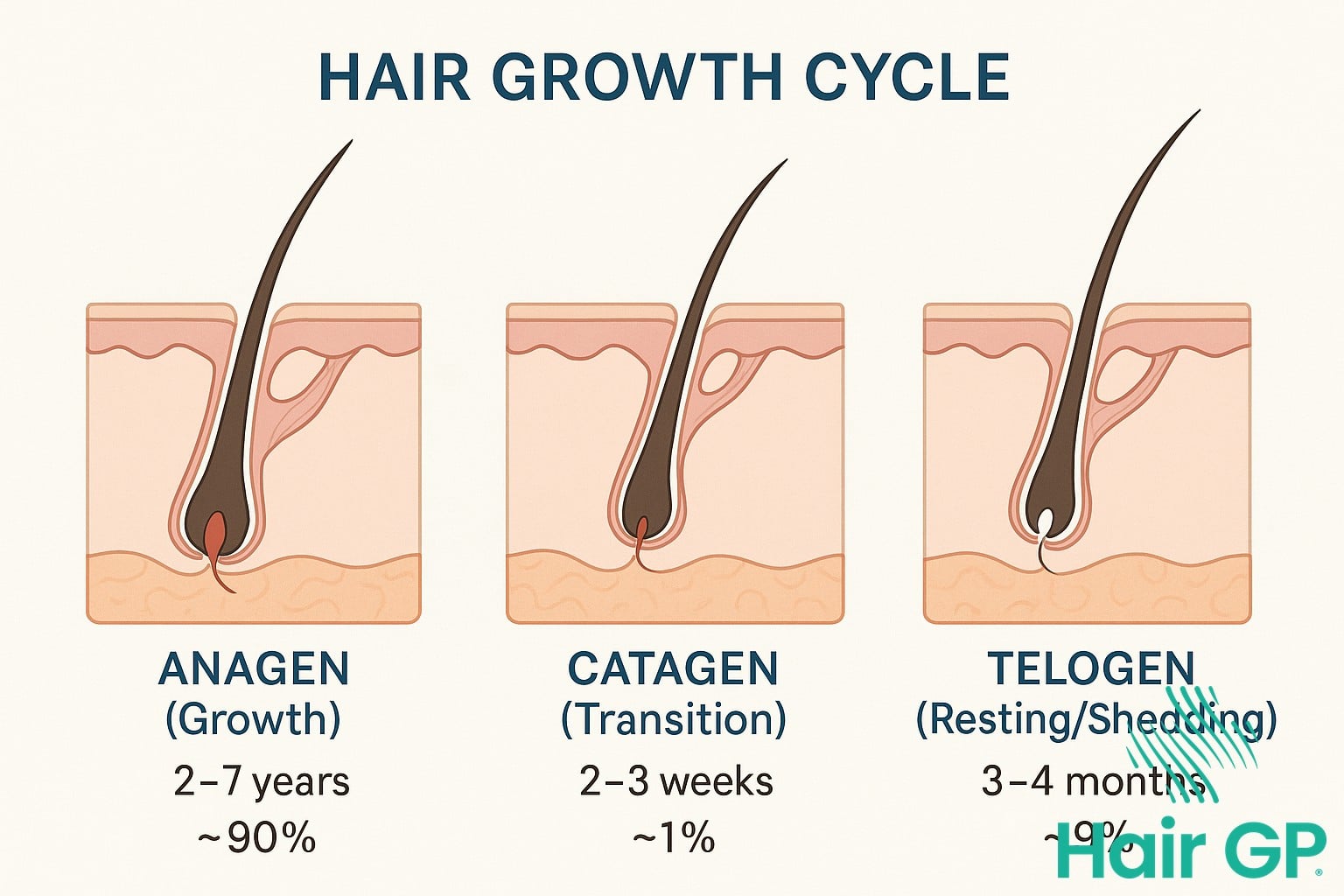
Common Types of Detox-Related Hair Loss
Understanding the various hair loss conditions that can manifest during detoxification helps distinguish between temporary shedding and more serious concerns. Whilst several types of hair thinning may occur, telogen effluvium remains the predominant pattern observed when the body undergoes detoxification stress.
Telogen Effluvium: The Most Common Culprit
Telogen effluvium accounts for approximately 90% of detox-related hair loss cases[1], characterised by widespread excessive shedding rather than patchy baldness. This condition occurs when significant metabolic stress pushes numerous hair follicles simultaneously into the resting (telogen) phase, resulting in diffuse thinning across the entire scalp.
The hallmark of telogen effluvium is its uniform distribution pattern—unlike alopecia areata, which creates distinct circular patches, or androgenetic alopecia’s predictable receding patterns. Sufferers typically notice increased hair fall during washing or brushing, with 150-300 hairs shed daily compared to the normal 50-100[2].
Common trigger factors include rapid weight loss, nutritional deficiencies, hormonal fluctuations, and the metabolic stress of detoxification itself. The good news is that telogen effluvium is entirely reversible once the triggering stress resolves. Recovery typically begins within 3-6 months, with complete regrowth expected within 12 months for most individuals.
Differentiating telogen effluvium from actual hair loss conditions is crucial—whilst frightening, this temporary shedding doesn’t damage follicles permanently. The hair growth cycle simply requires time to normalise after the initial disruption.
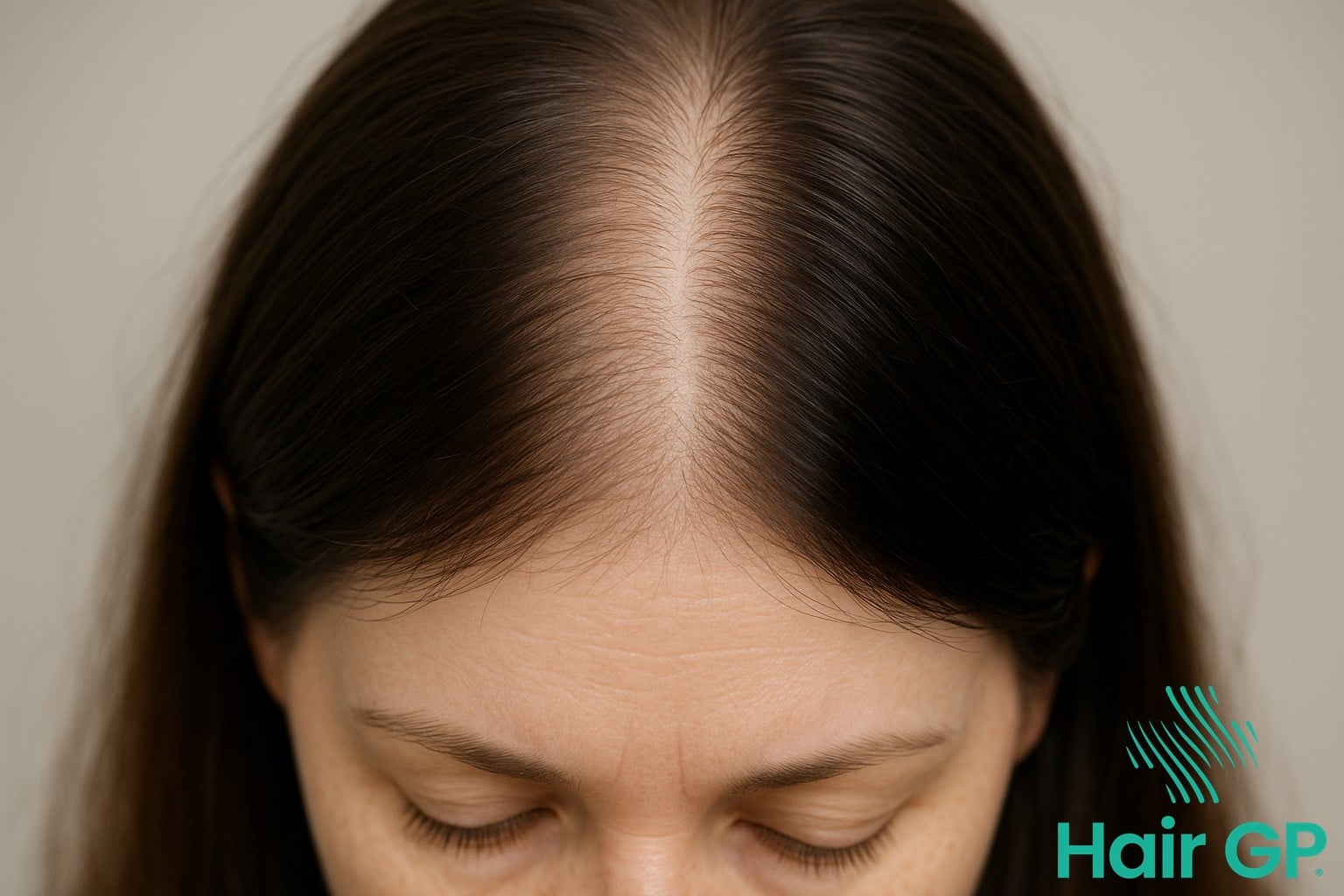
Why Some People Experience More Shedding Than Others
Individual responses to detoxification programmes vary significantly, with some experiencing minimal hair changes whilst others face noticeable shedding. Multiple factors determine susceptibility to hair loss during cleansing protocols, including genetic makeup, baseline nutritional status, pre-existing scalp conditions, and the intensity of the chosen detox regimen.
Risk Factors and Nutritional Deficiencies
Several key factors increase vulnerability to severe shedding during detoxification. Protein deficiency poses the greatest risk, as hair follicles require adequate amino acids for keratin production[1]. Individuals already experiencing gradual thinning or brittle hair typically face heightened susceptibility when beginning restrictive cleansing programmes.
Iron levels play a crucial role in determining hair loss severity. Research indicates that ferritin levels below 70 ng/mL correlate with increased shedding risk during metabolic stress[2]. Pre-existing conditions like androgenetic alopecia or female pattern baldness compound detox-related hair damage, as these individuals possess genetically sensitive follicles.
Those with underlying nutritional deficiencies in zinc, B-vitamins, or essential fatty acids often experience more pronounced effects when losing hair during detoxification. The combination of restricted dietary intake and existing deficits creates an environment where follicles cannot maintain normal growth cycles.
Timeline and Recovery Expectations
Understanding the timeline of detox-related hair loss can provide reassurance during a potentially distressing experience. Most individuals notice hair loss beginning approximately two to three months after completing detox, with shedding reaching its peak around the four to five-month mark. The complete recovery process typically spans six to twelve months, though individual experiences may vary.
When Hair Returns to Normal
Recovery signs often appear gradually as the body readjusts. Initially, excess shedding begins to slow, returning to normal hair shedding levels of 50-100 strands daily. Within four to six months, many notice new hair growth emerging as fine ‘baby hairs’ along the hairline and crown. These delicate strands represent the first wave of hair regrowth and will gradually thicken over time.
As recovery progresses, texture improvements become apparent. Hair grows stronger and more resilient, with improved shine and elasticity. The emergence of new growth creates a fuller appearance, though patience is essential as hair grows approximately half an inch monthly. Most individuals report significant improvement by the nine-month mark, with complete restoration often achieved within a year of initial hair loss onset.
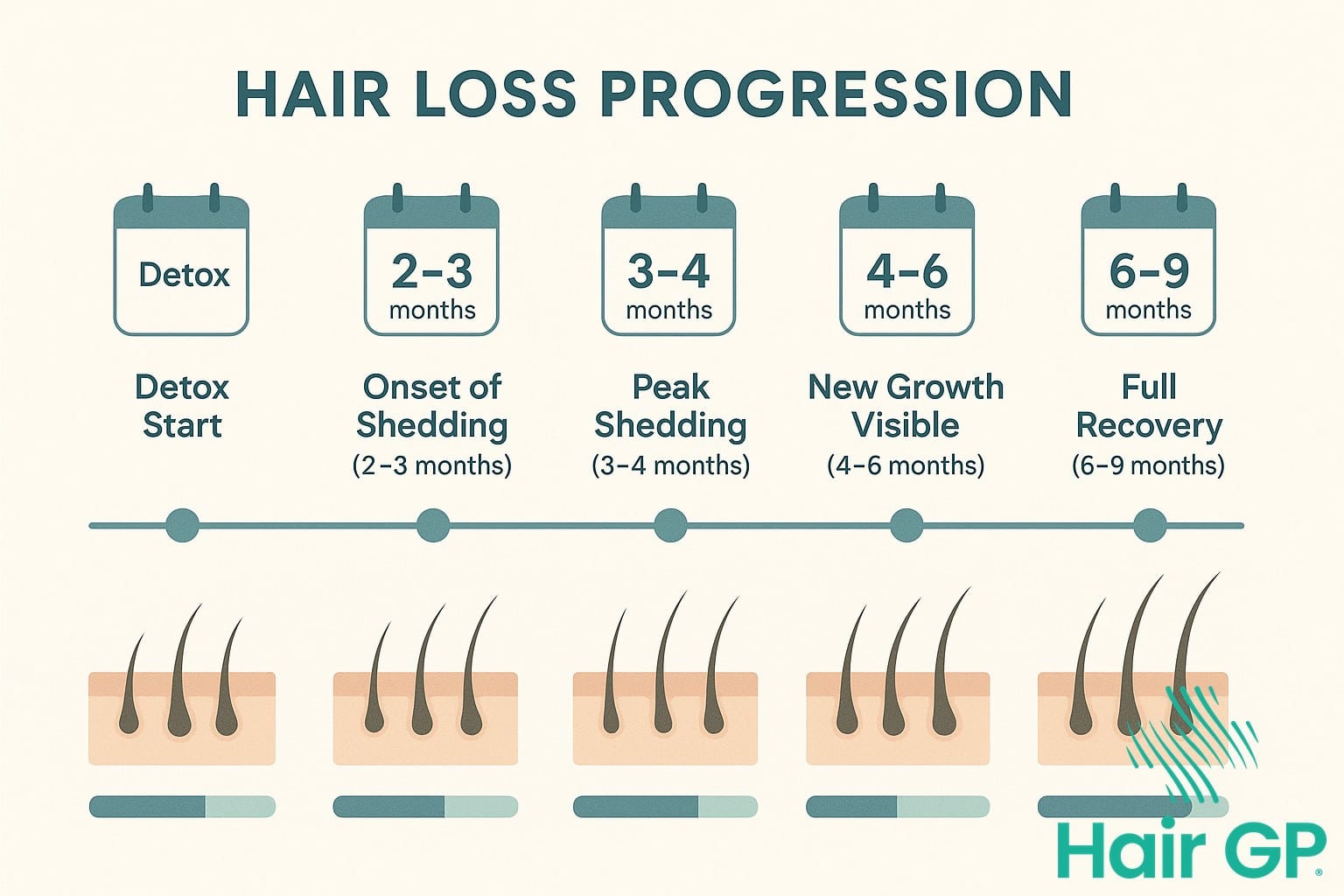
Managing Hair Health During Your Detox Journey
Whilst detoxification can temporarily affect your hair, implementing strategic nutritional and care practices can significantly minimise shedding and support healthy hair growth. By focusing on proper nourishment and gentle handling, you can maintain hair health throughout your cleansing journey.
Essential Nutrients for Hair Support
Adequate protein intake remains crucial for maintaining healthy hair during detox, as hair follicles comprise primarily keratin protein. Aim for 0.8-1 gram per kilogram of body weight daily from quality sources. Iron and B vitamins, particularly biotin and B12, play vital roles in hair production and should be prioritised through leafy greens, legumes, and fortified foods. Omega-3 fatty acids from sources like flaxseeds, walnuts, and algae supplements help support scalp health by reducing inflammation and promoting optimal follicle function.
Gentle Hair Care Practices
Adjusting your hair care routine during detox can prevent additional stress on vulnerable strands. Reduce heat styling frequency and opt for air-drying when possible to minimise damage. Use a wide-toothed comb for gentle brushing, starting from the scalp and working downwards to prevent breakage. Regular scalp massage with fingertips for 5-10 minutes daily can boost circulation to support a healthy scalp environment.

When to Seek Medical Help for Hair Loss
Whilst temporary shedding during body detoxification typically resolves naturally, certain warning signs warrant immediate medical evaluation. Sudden patchy hair loss, particularly appearing as distinct bald spots, may indicate alopecia areata or other autoimmune conditions requiring professional assessment [5]. Unlike diffuse thinning from telogen effluvium, these patches often have clearly defined borders and completely smooth surfaces.
Seek medical attention if hair loss persists beyond three months, worsens progressively, or accompanies other symptoms like scalp pain, burning sensations, or visible inflammation. An unhealthy scalp showing redness, scaling, or pustules suggests underlying dermatological conditions beyond simple detox reactions. Additionally, if hair thickness doesn’t begin recovering after six months, or if you notice permanent hair loss patterns developing, professional evaluation becomes essential.
Medical professionals can distinguish between temporary shedding and conditions requiring intervention through comprehensive scalp examination and blood tests [6]. They may assess thyroid function, iron levels, and hormonal balance to identify treatable causes. Avoid aggressive treatments like harsh scalp scrub products without professional guidance, as these may worsen certain conditions. Early intervention proves crucial for preventing progression to permanent hair loss, particularly when underlying medical conditions contribute to the problem.
Conclusion
Experiencing hair shedding during detoxification can be distressing, but it’s crucial to remember that this is a temporary hair loss condition that typically resolves within three to six months. The body’s remarkable ability to restore balance means that patience and proper care will lead to recovery and stronger hair growth once the detox phase concludes.
Managing detox-related hair loss requires a multifaceted approach: maintaining adequate nutrition, staying well-hydrated, managing stress levels, and practising gentle hair care routines. Supporting your body with essential nutrients, particularly protein, iron, and B vitamins, whilst avoiding harsh chemical treatments allows your hair follicles to recover naturally.
Interestingly, many individuals report experiencing scalp detox benefits once the initial shedding phase passes, including improved hair texture, enhanced growth, and a healthier scalp environment. This renewal process, whilst temporarily challenging, often results in healthy hair that’s more resilient than before.
Remember that your body is undergoing positive changes during detoxification. Trust the process, implement supportive measures, and seek professional guidance if concerns persist beyond six months. With time and proper care, your hair will return to its normal growth cycle, often emerging healthier and stronger than before the detox journey began.
Frequently Asked Questions
During detox, losing 100-150 hairs daily (compared to normal 50-100) is common. If you’re experiencing clumps of hair falling out or visible bald patches, consult a healthcare provider.
Detox-related hair loss is typically temporary. Hair usually regrows within 3-6 months after the stressor is removed. Permanent loss is rare and usually indicates an underlying condition.
Not necessarily. Evaluate the severity and consider modifying rather than stopping. Ensure adequate nutrition, reduce detox intensity, and consult your healthcare provider if concerned.
Iron, zinc, vitamin D, and omega-3s support hair health. However, get blood work done first to identify deficiencies rather than supplementing blindly.
References
- Almohanna HM, Ahmed AA, Tsatalis JP, Tosti A. The Role of Vitamins and Minerals in Hair Loss: A Review. Dermatol Ther (Heidelb). 2019;9(1):51-70.
- Thom E. Stress and the Hair Growth Cycle: Cortisol-Induced Hair Growth Disruption. J Drugs Dermatol. 2016;15(8):1001-1004.
- Paus R, Cotsarelis G. The biology of hair follicles. N Engl J Med. 1999;341(7):491-497.
- Asghar F, Shamim N, Farooque U, Sheikh H, Aqeel R. Telogen Effluvium: A Review of the Literature. Cureus. 2020;12(5):e8320.
- Strazzulla LC, Wang EHC, Avila L, et al. Alopecia areata: Disease characteristics, clinical evaluation, and new perspectives on pathogenesis. J Am Acad Dermatol. 2018;78(1):1-12.
- Piraccini BM, Alessandrini A. Androgenetic alopecia. N Engl J Med. 2023;387(23):2186-2196.



